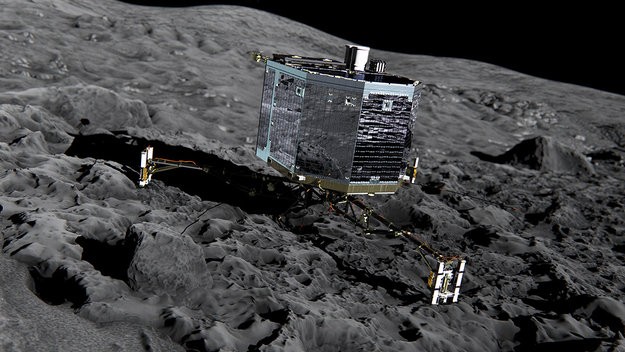After months off going offline and into hibernation, the Philae lander on Comet 67P finally has woken up and sent a signal back to Earth according to the European Space Agency.
The probe which was previously in hibernation marks the first spacecraft to ever land on a comet when it had a rough touchdown on the surface of Comet 67P/Churyumov-Gerasimenko last November.
The Rosetta mission team hoped that the Philae lander will become operational for three months however, it was only active for 60 hours before it drained its batteries after running out on solar energy. S
cientists believe that during touch down, Philae went on a bumpy landing and rested under a deep shadow of a cliff that made it impossible for the lander to gather solar energy.
However, since the comet is now travelling near the sun where Philae has now accumulated ample solar power to communicate with the Rosetta spacecraft that has been following comet 67P since August last year.
On Philae's Twitter account, the probe tweeted, "Hello Earth! Can you hear me?"
On Sunday, June 14, the German Aerospace Centre announced that Philae has indeed communicated with their ground team for 85 seconds last Saturday evening.
According to Philae's project manager, Stephan Ulmec, Philae is apparently doing well where its operating temperature was measured at -35º Celsius and working on the available 24 watts of power.
The team of scientists are now waiting for the next contact from the lander where Philae is designed to conduct experiments and analyze ice and rock composition of the comet. Scientists believe that comets can hold clues about the origins of the solar system.
The Rosetta spacecraft travelled for 10 years to reach comet 67P where it went into the comet's orbit last August and launched the Philae lander on November where it roughly bounced on the surface for at least a kilometer on the surface during touchdown.
Unfortunately, its exact location is still a mystery.



























